Modder creates 'invisible' extreme gaming PC — hides 13900K, RTX 4090, and 45-inch OLED display inside a standing desk
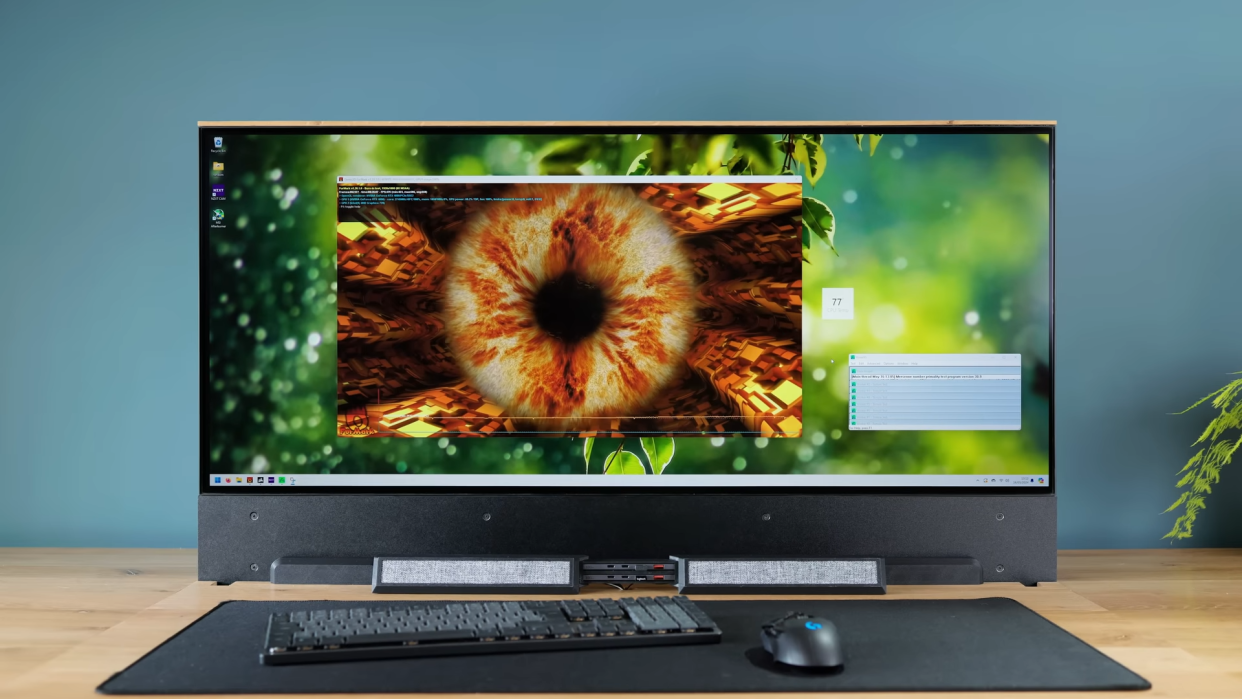
Matt, who runs his well-known YouTube channel DIY Perks, has created an amazing "Endgame Invisible PC." This involves making a complex hidden panel that opens to reveal an integrated widescreen OLED monitor with all the peripherals underneath, his desktop-grade ultra-high-end components, and a ginormous custom liquid cooling radiator. All of this is hidden within the tabletop of a motorized desk capable of supporting 440 lbs (or close to 200 kg).
While the whole build is impressive in itself, nothing about it is easy. It relied on Matt's experience with his previous builds, as well as the time, effort, and expenses incurred due to the components used in this setup. The centerpiece is a motorized standing desk, but a custom tabletop that houses the entire PC system, monitor, and connected peripherals is needed.
Throughout the video, Matt uses multiple stripped-down components and a series of custom-made parts to make them work with each other seemingly flawlessly. While some may call it overkill at a glance, the whole video shows that it was necessary because of the choice of components, cooling, and the part where it needed to justify the words 'invisible' and 'end game.'
The engineering behind the 'hidden' art
Aluminum is a soft metal, and these 3mm sheets are bendy, becoming rigid once the panels are screwed in with the help of extruded aluminum support used as an internal frame. Once the body of the hollow aluminum desk top was made, the casing was sawed with a hinge added for the monitor hatch.
Throughout this build, Matt used a series of special hinges, custom L-brackets, pneumatic struts, tension springs, and sliding rails to work between these joints and panels needed to hold in place while opening and closing the monitor hatch. As a result, it will conceal a mini ITX desktop build while making it easier to open, close, and keep the hatch in place during use.
Matt also explained that some of this was possible because of technological advancements, making monitors like the Corsair Xeneon Flex ultrawide bendable OLED used in this build possible. However, it was stripped down to its PCB and the panel, which was painstakingly integrated into this custom build.
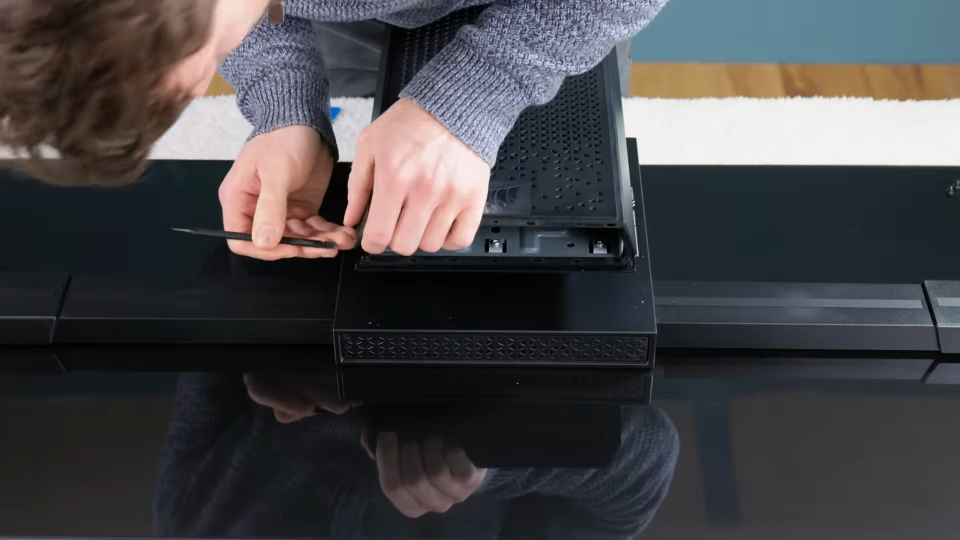
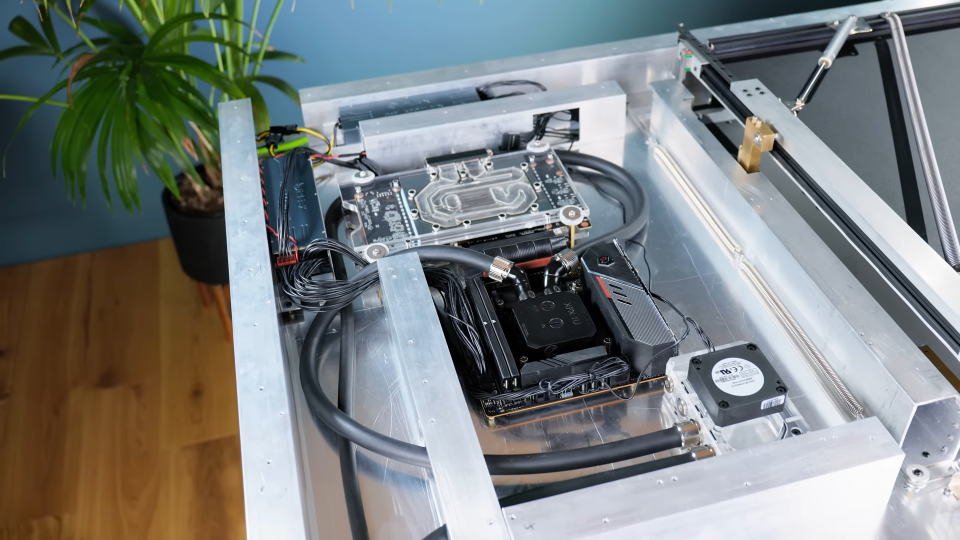
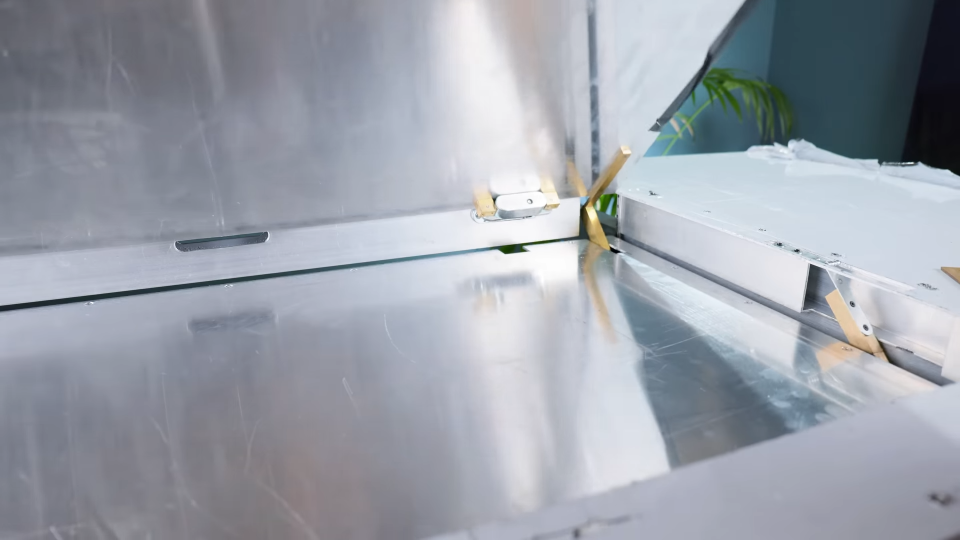
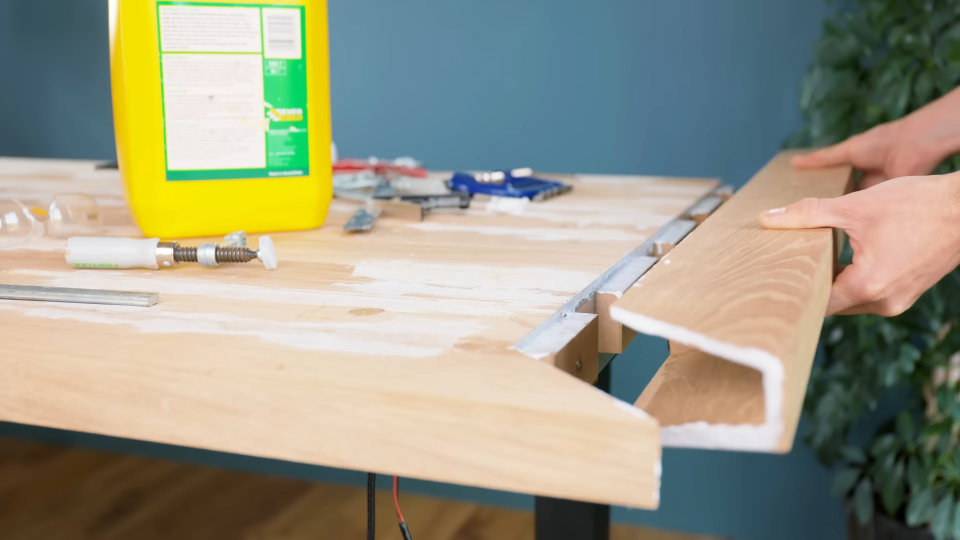
The depth of the tabletop was crucial as this would house all the components and peripherals while being seamless with the rest of the desk when opened or closed. This would include a full-size keyboard, a mouse, a headset, and an external audio interface with the OLED monitor.
Matt's build includes an Intel Core i9-13900K processor paired with an ASRock Z790 PG-ITX/TB4 motherboard and a Zotac GeForce RTX 4090 graphics card with water blocks used on these components. Since ATX and SFX power supplies are not small enough to be concealed, two HDPlex 500W GaN (Gallium Nitride) power supplies were used, and one of the units is dedicated to the graphics card. For storage, twelve 4TB Crucial P3 M.2 drives are installed on a Flashtor 12 Pro NAS drive, which is connected to the motherboard, M.2 port, and a 10Gbit M.2 network card.
The wooden panels were then installed on the exterior of the aluminum case and internally to serve as a surface for the peripherals. The gaps behind the hatch were hidden with a spring-loaded wooden insert that protruded outwards when opened. The only way the monitor hatch could be lifted was by using a magnet attached to a concealed steel plate underneath the monitor hatch. Fortunately, it is easy to lift and close because of the pneumatic struts.
Cooling a system with a 800W heat output with a custom radiator
Matt needed a suitable liquid cooling radiator, as cooling a system with a total of 800w heat output would be a big task for any radiator. A custom water-cooling block was constructed using four brass pipes sandwiched by forty low-profile copper heat fins with bidirectional low-profile fans. The entire frame, including the front section, was covered with a thin wooden panel shaped so that the tabletop looked thinner.
However, this custom water block array couldn't effectively cool the system despite having these low-speed fans at max speeds, with the system reaching up to 92 degrees Celsius during stress testing. The cooling setup was replaced with an array of 140mm PC fans and taller heatsinks with more space and surface area.
The result was a vast improvement in cooling capacity while maintaining quiet operation. The 140mm fans were running at 432 RPM, which can keep the RTX 4090 at 52 degrees while running on Furmark.
A series of 'necessary overkills'
Ironically, Matt says this enormous liquid cooling array costs less than the previous custom low-profile set and typical liquid cooling radiator you could buy from a retailer. However, this wouldn't have included labor costs as Matt did it himself. Additionally, the costs involved would deter anyone from making such builds.
Many of the challenges of this build could have stymied less-dedicated individuals, but it shows the skillset Matt has to pull this one off. While custom builds will always continue to impress many, every part of this build would leave many in awe.

